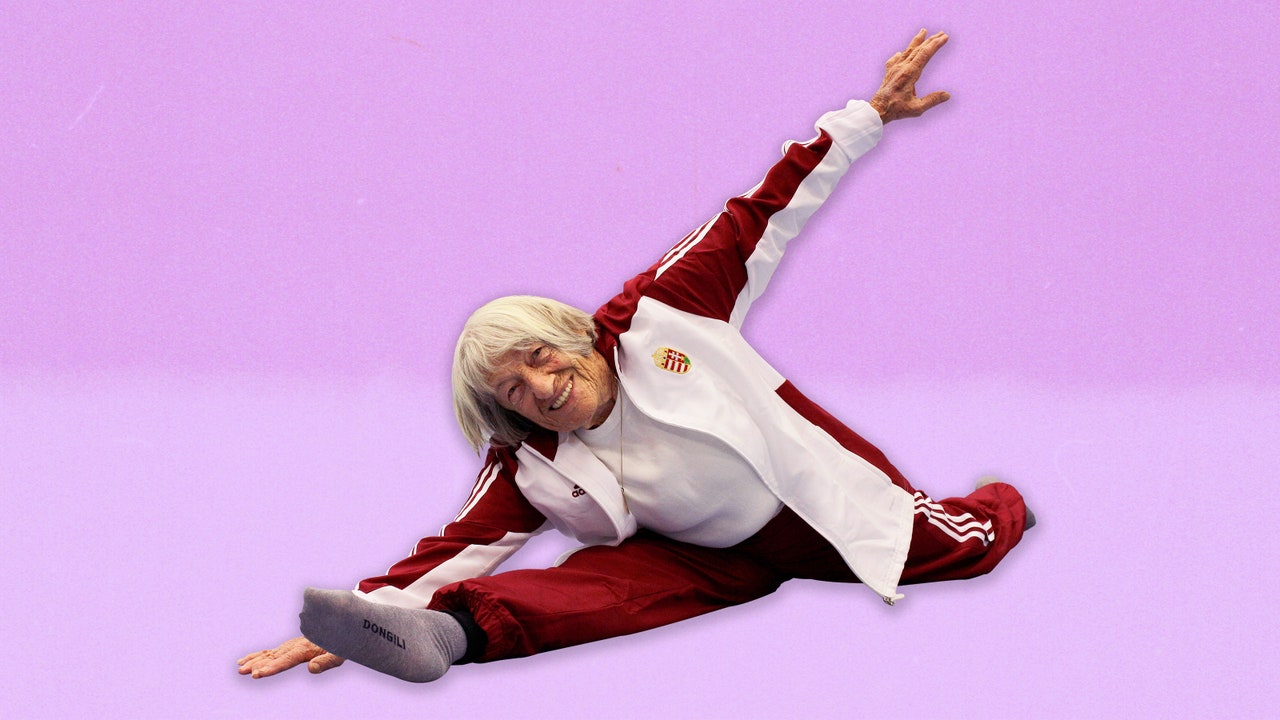The Oldest Living Olympian Survived the Holocaust, WWII, and Now the Pandemic

[ad_1]
Take it from someone who’s been there: Being an Olympic hopeful in a time of global crisis demands a certain amount of fortitude. Gymnast Ágnes Keleti, a favorite for the last Tokyo Olympics disrupted by world turmoil—that would be the 1940 Tokyo Olympics—dealt with their eventual cancellation, survived the Holocaust, and went on to bag five Olympic gold medals, more than a decade later than she originally planned. She’s a champion of persevering through uncertainty—and her wisdom is precisely suited to this moment.
Born in Budapest in 1921 and a gymnast since she was four, Keleti displayed innate ability and a drive to be the best, qualities that swiftly carried her to the highest level of her sport. She was 16 when she won her first national title in 1937, fast-tracking her for the 1940 Olympics.
Then everything went wrong. The outbreak of World War II in Europe dealt a serious blow to the Games, which had already been moved from Tokyo to Helsinki in 1938 because of war between Japan and China. When Europe went to war as well, the International Olympic Committee canceled the Games entirely, nixing a last-minute proposal from the United States to host them in Helsinki’s stead.
Meanwhile, a series of ever more restrictive laws limiting Jewish people’s rights impacted Keleti’s life. First she was stripped of her place on the national team; the next year she was expelled from her gymnastics club. Even if the 1940 Olympics had happened, she would not have been allowed to participate. “In 1940 no athlete of Jewish heritage in Hungary was allowed to compete, so even if the Olympics had been held, unfortunately I wouldn’t have been able to take part,” she says.
By 1944, Hungary’s Jewish population was being loaded onto trains bound for Auschwitz and other German concentration camps. Fantasies about competing at the Games vanished; “staying alive was my most important goal,” Keleti says. She applied herself to it with the same fastidiousness she once reserved for gymnastics.
Keleti decided to disappear. Through a cousin, she arranged to trade most of her life savings for the identity papers of a young woman named Piroska Juhàsz, who was about the same age. Dressed in Juhàsz’s clothes, Keleti left Budapest for the countryside, where she found work as a maid in the home of a family of Nazi sympathizers. Her mother and sister managed to secure “protective passports” from Swedish diplomat Raoul Wallenberg, which likely saved their lives. Her father was not so lucky; he perished at Auschwitz, one of about 550,000 Hungarian Jews to die in the gas chambers.
Keleti’s athletic instincts may have contributed to her survival. Once, in Budapest, she was stopped by guards and asked to show her ID. When she presented Juhàsz’s papers, they made her recite the information, a perilous performance in which a mistake would almost certainly have been fatal. Just as she had in competition, Keleti held her nerve and didn’t hesitate or falter. The guards let her go.
By 1946 she was able to return to gymnastics. Though the war years had not left much time for training, “I always managed to do something like running,” Keleti says. “Later on I also worked moving furniture, which helped my physical condition.” Against all odds, she earned a place on the 1948 Olympic team and the chance to return to her dreams of gold. But in a cruel twist of fate, Keleti injured her ankle badly days before the Games began and couldn’t compete.
In 1952—12 years after the Games where she might have been a star—Keleti finally became an Olympian. At 31, Keleti was far past her prime in a sport dominated by teens. But she was unstoppable—she tumbled to the gold medal on floor exercise, her longtime favorite event, as well as a silver and two bronzes.
[ad_2]
Source link




